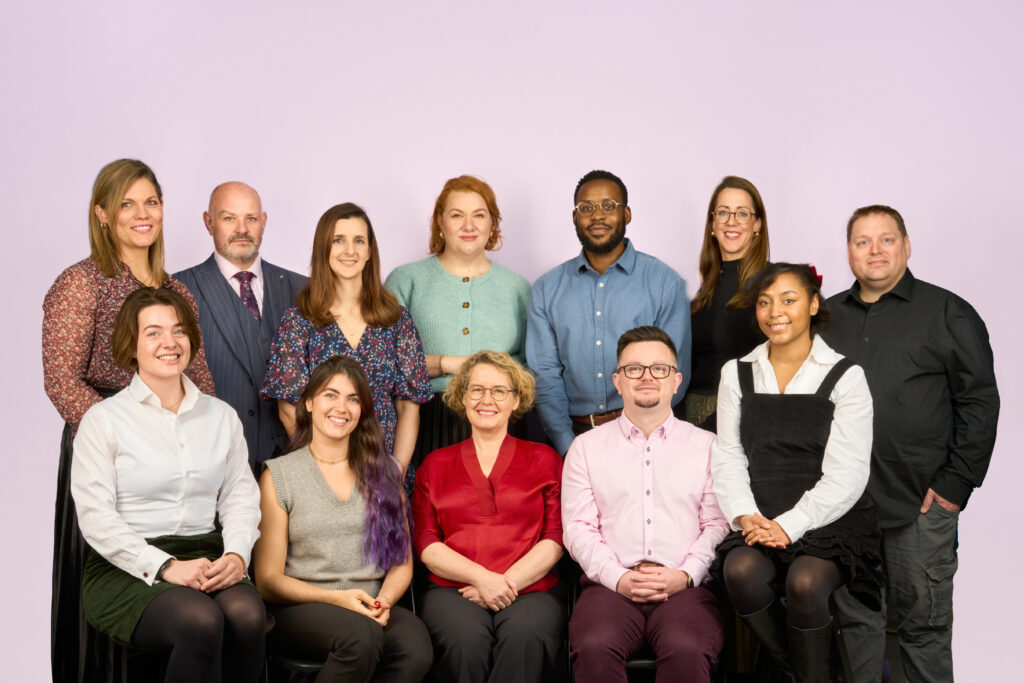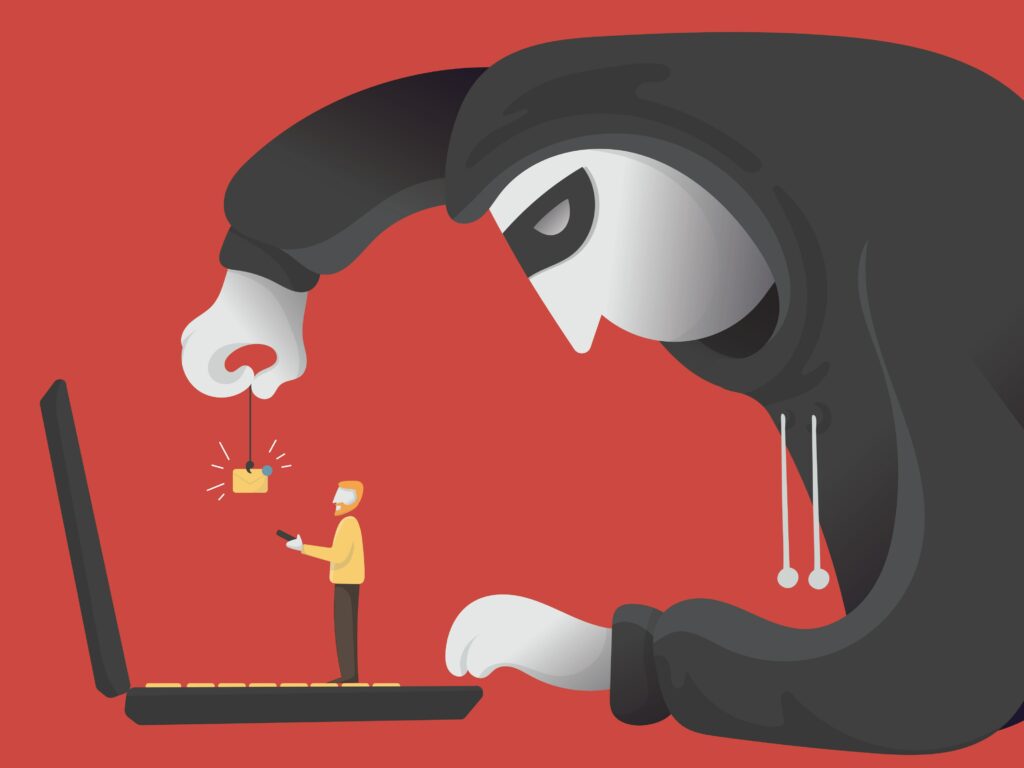Introduction
“Going online is a massive part of socialising and human connection.”
Between January and March 2025, Cyber Champions carried out research, commissioned as part of Digital Care Hub’s Better Security, Better Care programme, to explore how working-age adults with learning disabilities use the internet for personal purposes, the risks they face, and the support they and their carers need to stay safe online.
This is a summary of the findings and recommendations, which highlight both the benefits of digital access and the importance of reducing risk through better training, resources, and collaboration.
The research included:
- 50 survey respondents: 18 people with learning disabilities and 32 carers/supporting organisations
- 10 interviews with 12 participants
- 4 focus groups involving 32 people (10 staff and 22 people with learning disabilities)
- Extensive secondary research.
This summary presents the key findings and recommendations, supported by direct quotes and statistics.
Key findings
1. The internet is a lifeline—but not equally accessible
Participants consistently highlighted the positive role that the internet plays in their lives. Their top use was staying connected with friends and family, followed by entertainment. As one person put it:
“If I had no internet, I’d be pulling my hair out and not be able to contact my mum.”
Despite this, barriers to digital inclusion remain widespread. Although 94% of participants reported they could access online services, further probing revealed that those who said they “don’t want to” often lacked confidence or understanding, rather than interest. The report found that 85% of people with learning disabilities do not receive regular help using online services. Support was often limited to assistance with banking, making purchases, and accessing care plans.
A variety of accessibility issues were identified, including:
- poorly designed websites without read-aloud functions or simplified text
- difficulties in reading, navigating, or understanding content
- complex security features like CAPTCHAs, Face ID, and multi-step verification processes
- limited mobile coverage and unreliable Wi-Fi
- incompatibility between devices and software
These barriers contribute to a sense of frustration, dependence on others, and missed opportunities for engagement. One focus group participant highlighted:
“Members face challenges needing to work with systems that don’t have the right hardware and software connections.”
Secondary research cited in the report also confirms these challenges. A government study found that 15% of disabled individuals had never been online, compared with just 3% of non-disabled people, and that poor accessibility remains a significant barrier.
2. People face significant cyber risks
While participants expressed confidence in using the internet, there was a clear gap between perception and actual knowledge of cyber safety. For example, 53% rated themselves as 4 or 5 out of 5 for confidence in using online services, but only 35% rated themselves similarly for staying safe online.
The survey highlighted that many people struggled with managing cyber threats:
- only 30.8% knew how to spot a fake email
- 29.4% didn’t know how to change privacy settings
- 23.5% were unsure how to update their device’s security software
Many people were unaware of the real-world consequences of online actions, leaving them vulnerable to manipulation. For instance, some participants had been coerced into sharing inappropriate images, believing it was the norm and a way to make friends.
Carers and support workers also reported growing concerns about:
- grooming and sexting
- bullying via platforms like WhatsApp
- sharing too much personal information
- being unable to distinguish between real-life and online friends
These vulnerabilities were compounded by a lack of tailored training and guidance. The research stressed the importance of using role-play and real-life stories to help people understand the implications of online behaviour.
3. People want cyber safety training—but rarely receive it
Nearly two-thirds of participants had never received cyber safety training outside of school or college. Yet 84% identified training as something they would find helpful.
Feedback from people with learning disabilities emphasised the need for training to be:
- personalised, based on interests and hobbies
- delivered using visual aids and real-life scenarios
- supported by online buddies, mentors, or moderated forums
They expressed a clear preference for learning through easy read guides, cartoon videos, roleplay scripts, and theatre-based learning. Topics of interest included:
- identifying scams
- setting privacy settings
- blocking or reporting unwanted contact
- understanding what ‘safe’ online behaviour looks like
This feedback indicates a strong demand for accessible, engaging, and relevant training that goes beyond technical skills to include social and emotional dimensions of online safety.
4. Carers and support staff are underprepared for digital support
Carers and staff from supporting organisations are central to enabling safe digital access, but they face multiple barriers:
- 25% had received no training or only once in their role
- 69% said training was annual but not tailored to their needs
- 89% supported people online at least once a month
There was a significant knowledge gap in essential digital safety practices:
- 30.4% couldn’t set up two-factor authentication
- 31.3% didn’t know how to update device security.
Despite this, the most common confidence rating given by staff was 4 out of 5, suggesting overconfidence and a mismatch between perceived and actual skills. One participant said:
“Updating devices? Who does it? No idea. 2FA? No idea.”
Many staff admitted to fear of technology and felt overwhelmed by changing risks, particularly with the growth of generative AI and increasingly sophisticated scams. In several cases, a lack of expertise led carers to restrict or remove devices, rather than address the risks through support or education.
5. Removing access is common but harmful
Carers and families often responded to safety concerns by limiting or removing internet access entirely. While well-intentioned, this approach caused distress and exclusion.
“If I was not able to go online there’d be no music and that makes me feel gutted.”
Secondary research echoed this concern, describing “carer gatekeeping” as a cause of digital exclusion that can lead to social isolation and declining wellbeing. Over-restrictive measures also deny people the opportunity to build the skills they need to navigate the digital world safely and independently.
Recommendations
The research identified five key recommendations for the adult social care sector to consider. Each includes practical steps and reflects the voices of people with learning disabilities and carers.
R1: Develop accessible cyber guidance
Create a suite of accessible materials, including:
- easy read guides with images and minimal text
- step-by-step videos with voice-over instructions
- tips on using features like two-factor authentication and bookmarking
- clear explanations of passwords, verifications, and account security.
This content should be hosted on a central hub such as the Digital Care Hub, with regular updates to reflect emerging tools and threats.
R2: Provide tailored cyber safety training
Training should be engaging, relevant, and integrated into daily life. Effective formats include:
- workshops with discussion guides
- theatre-based learning exploring real-world consequences
- roleplay exercises and skill bites
- videos featuring cartoon and real-life scenarios.
Topics should cover dating safety, social media, banking, phishing, and reporting abuse. Using peer stories and positive examples can help people relate to and apply the learning.
R3: Deliver tailored training for paid carers and support staff
To support people effectively, carers need training that covers both personal and professional contexts. This should include:
- basics of cyber hygiene (e.g. phishing, scams, privacy settings)
- managing and updating devices securely
- navigating online platforms like Microsoft, Google, and social media
- understanding AI risks and new scam tactics
Training formats should be flexible:
- online modules (recorded and live)
- interactive checklists and guides
- face-to-face community sessions
Embedding this training into onboarding and continuous professional development can ensure it is part of routine practice.
R4: Provide targeted support for unpaid carers
Family members and unpaid carers often lack the knowledge or confidence to guide people safely online. Training should:
- build understanding of common risks (e.g. sexting, romance fraud)
- explain privacy settings and how to spot scams
- offer opportunities to ask questions in person or online
- be available flexibly, through community venues and digital formats
By supporting families to feel more capable, it can reduce the likelihood of over-restrictive responses to online harm.
R5: Develop a communication and engagement plan
To maintain momentum and consistency across the sector:
- refresh training and guidance at least twice a year
- create monthly newsletters, webinars, and podcasts
- share new threats, success stories, and evolving best practices
- involve people with lived experience in resource design
- promote collaboration between local authorities, NHS, and care providers
Cyber training should not be a “one-off” exercise but part of an ongoing learning culture. Regular updates and sector-wide communication channels will enable to to remain relevant and engaging.
Conclusion
The internet opens up opportunities for people with learning disabilities to connect, learn, and live independently. But without the right support, it also brings risks that can lead to harm and exclusion. This research shows that people want to learn, carers want to help and the sector has a responsibility to act.
What is needed now are accessible, practical tools that enable people to use the internet confidently and safely. With the Digital Care Hub as a central platform and strong collaboration across the sector, we can ensure that no one is excluded from digital life.
“People with learning disabilities have a life and deserve to live that life as full as anybody else.”
Acknowledgements
Digital Care Hub and Cyber Champions would like to thank everyone who took part in this research – particularly the people with learning disabilities and their family carers.
Photo by Alexander Grey on Unsplash

